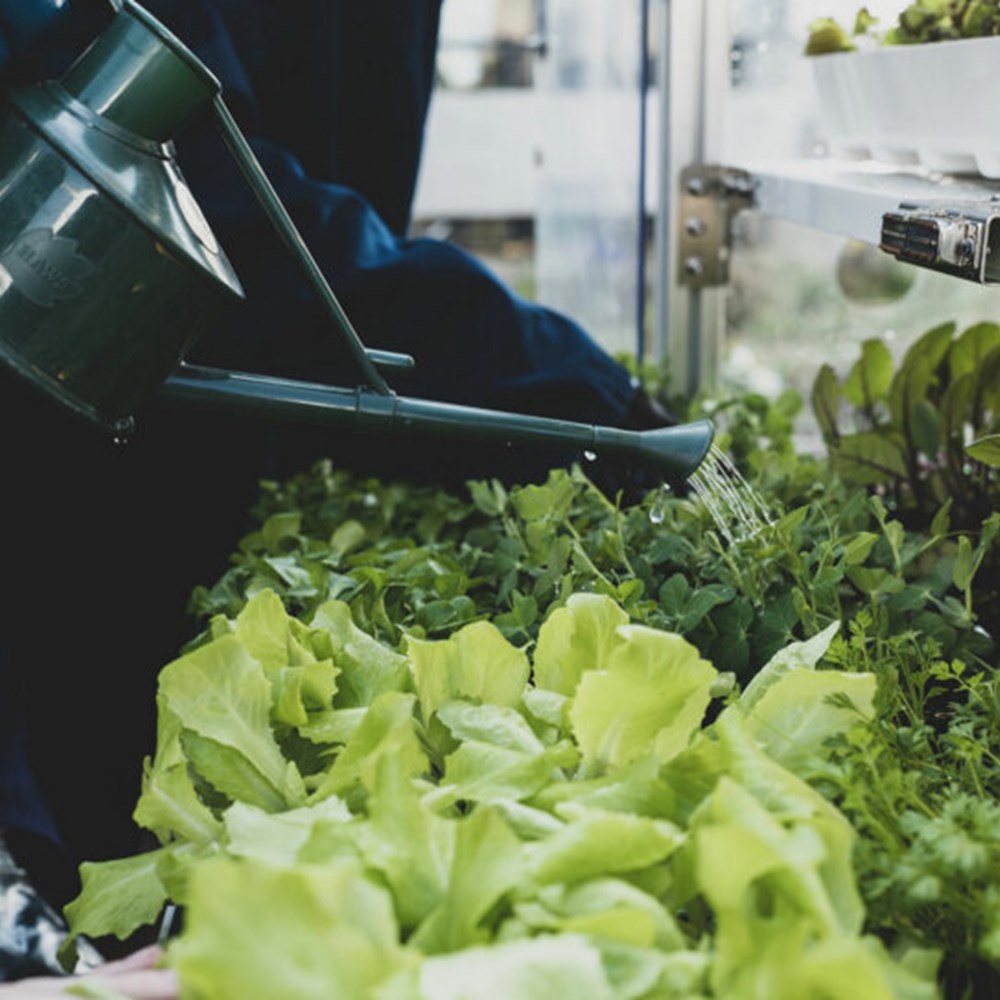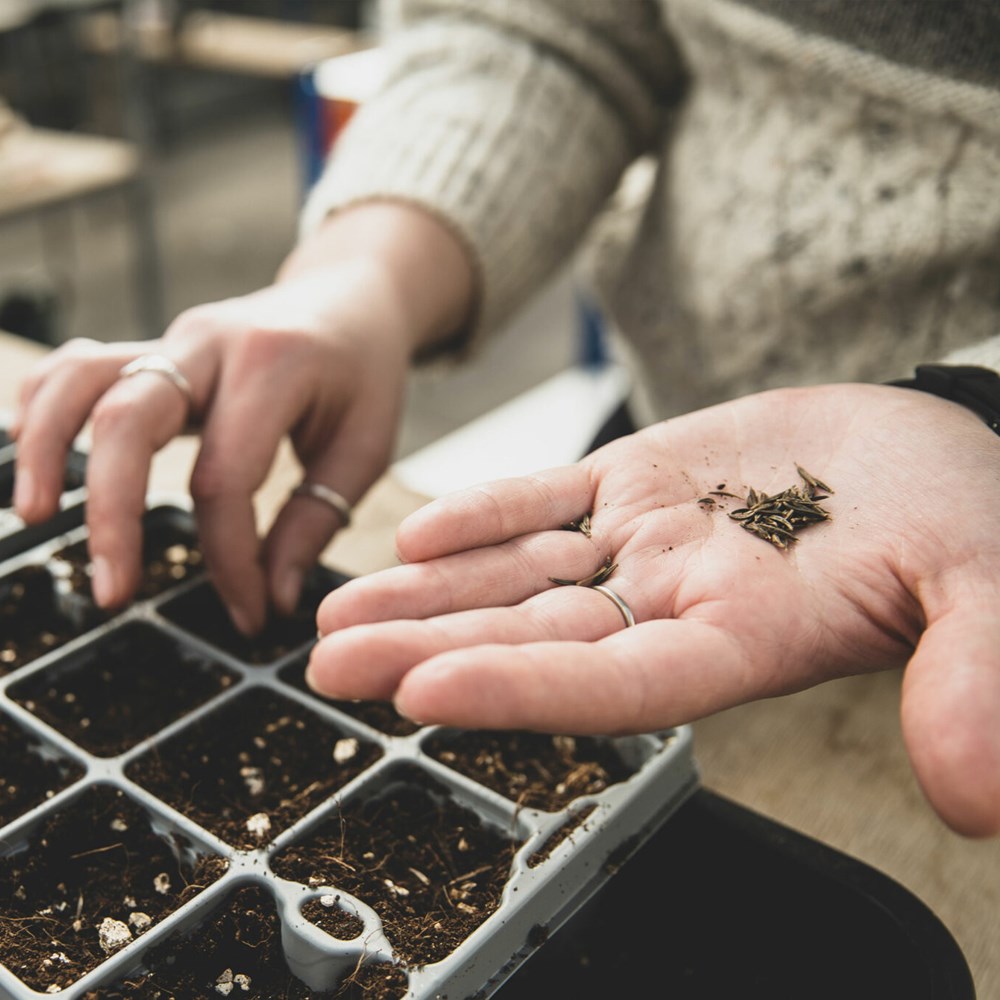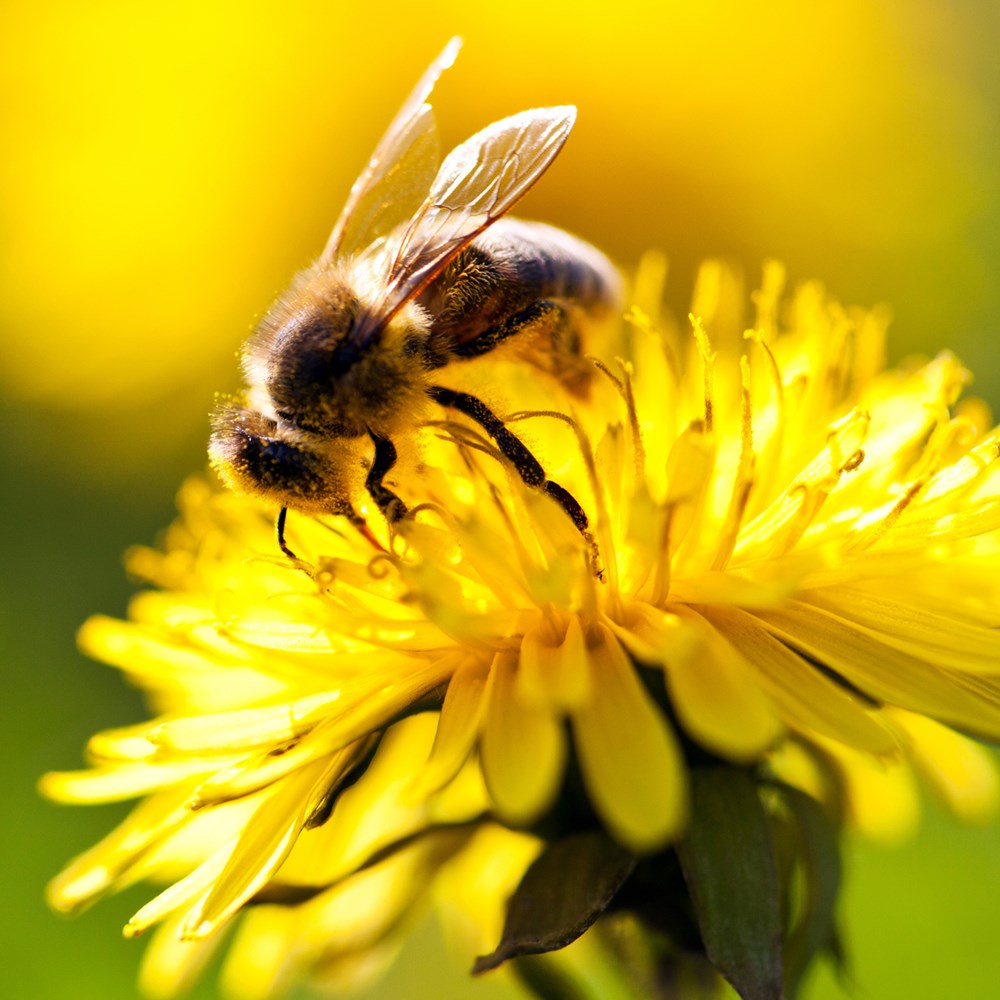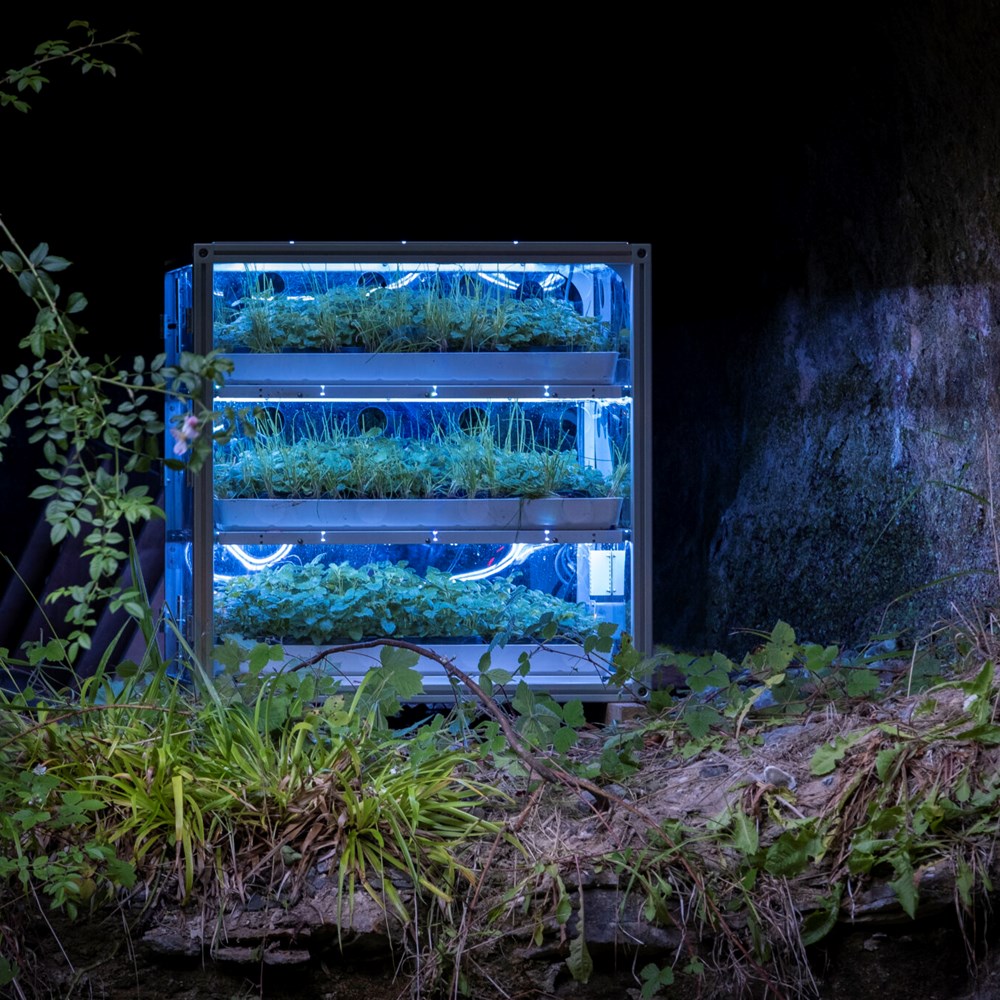Top Ten Plants for Windowsills
Not everyone has a walled kitchen garden to grow fruit and vegetables, and, best of all, if the only growing space you have is inside your home on a windowsill, you can still have a variety of edible plants! Get creative and recycle whatever you can for plant containers, e.g., plastic mushroom boxes, old kitchen trays, egg boxes, etc – just add a few drainage holes and you’re set to get growing!

Not everyone has a walled kitchen garden to grow fruit and vegetables, and, best of all, if the only growing space you have is inside your home on a windowsill, you can still have a variety of edible plants! Get creative and recycle whatever you can for plant containers, e.g., plastic mushroom boxes, old kitchen trays, egg boxes, etc – just add a few drainage holes and you’re set to get growing!
1. Cress (Lepidium sativum)
One of the easiest crops to grow on windowsills, you don’t even need compost to get this sandwich-favourite to grow! Sprinkle a few seeds on wet kitchen towel and watch them sprout; if growing cress in compost, it will have a stronger, more peppery flavour.
2. Cut-and-come-again salad
Some types of lettuce (Lactuca sativa) are designed to have a few leaves picked at a time as you need them, allowing the rest of the plant to grow. Leafy salad leaves are great for windowsills as they can cope with varying amounts of light levels and don’t require much compost to grow.
Example: ‘Salad Bowl’
3. Radish (Raphanus sativus)
A small root vegetable which doesn’t require much compost to grow, radishes are super tasty veg, and easy and quick to grow indoors; they can be ready from seed to plate in 1 month. Keep sowing seeds for a constant supply of this tasty veg!
Example: ‘Cherry Belle’
4. Edible flowers
Nasturtiums (Tropaeolum majus) and marigolds (Tagetes patula) are not only tasty, edible flowers, but are very effective when grown alongside other crops, as they deter pests and will help keep your windowsill garden healthy. Pansies (Viola tricolor) are a great one for winter and can brighten up your home, as well as salads, during those dark, dreich days!
5. Bean sprouts
Bean sprouts are very healthy and cheaper to grow at home than buy from the shops! No compost required, just a clear glass jar, water, and seeds specifically designed for sprouting.
Example: Mung beans (Vigna radiata)
6. Pea shoots
A microgreen gem, packed with nutrition, and will brighten up a simple stir-fry in no time! Sow pea shoots every few weeks for a constant supply and harvest when the shoots are young for maximum flavour and nutrition.
Example: Sugar snap peas (Pisum sativum Macrocarpon Group)
7. Herbs
Herbs are perennial plants which can be grown all year round, and much cheaper to grow your own than buy from the shops. Windowsill herbs are low maintenance and will add a divine aroma to your home! Herbs such as thyme (Thymus vulgaris), oregano (Origanum vulgare) and parsley (Petroselinum crispum) do best on sunny windowsills; chives (Allium schoenoprasum), mint (Mentha spp.) and lemon grass (Cymbopogon spp.) are better for shadier windowsills.
8. Chilli peppers (Capsicum frutescens)
Another perennial crop great for growing indoors, with much better flavour than shop-bought chillies. Chillies are hungry plants so remember to feed them weekly (with a potassium-rich fertiliser) as soon as they begin to flower. Keep harvesting regularly to encourage more fruit to form.
Example: Apache F1
9. Kale (Brassica oleracea Acephala Group)
One for the outdoor window-box as well as the indoor windowsill, kale gives a great supply of greens into winter. Like cut-and-come-again lettuce, if you keep picking leaves when they are young as you need them, they will keep on growing and give you a longer harvest period.
Example: ‘Dwarf Green Curled’
10. Spinach (Spinacia oleracea)
Another one for the outdoor and indoor windowsills, spinach is as easy to grow as lettuce, and can be treated as a cut-and-come-again salad leaf. It doesn’t mind partial shade and is high in iron so a great crop for those winter months.
Example: ‘Apollo’
Some useful tips for getting growing – our dos and don’ts:
DO grow what you love! When space is at a premium, there’s no point growing anything you don’t like.
DO water and feed your plants regularly – when plants are in containers, they will dry out more quickly and use up the nutrients in the growing media (compost) quicker than you realise. The more you feed your crops, the more they will feed you!
DON’T grow plants in a drafty, dry area of your home. Seal up draughts in windows with bubblewrap or insulation tape; a moist atmosphere can be achieved by placing containers on trays filled with pebbles and keeping the pebble tray watered – this ensures humid air can be stored around the plants.
DON’T forget to check for pests and diseases, as these little critters are more likely to eat the young fresh leaves of crops before you, if you don’t keep your eye out!
DO keep growing in winter – investing in a grow-light will ensure you can grow edibles all year round with more success.
DO rotate your containers, to help your plants grow healthy and tall and avoid one-sided growth.
Author: Rebecca Cross
Explore more

Dandelion Resources
Get growing advice, seasonal suggestions and celebrate the joys of looking after plants.

Dandelion Project
With the aim of re-establishing Harvest as an event on the national calendar, Dandelion brought together community development, horticulture, live music, learning, sustainable thinking and innovative arts practice to support the people of Scotland to sow, grow and share together.

Dandelion Events
Dandelion culminated in in over 500 events as part of the largest-ever creative celebration of Harvest staged across Scotland.

Dandelion Results
Dandelion's Unexpected Gardens sprang up all across Scotland and continue on today event after our programme has ended.
